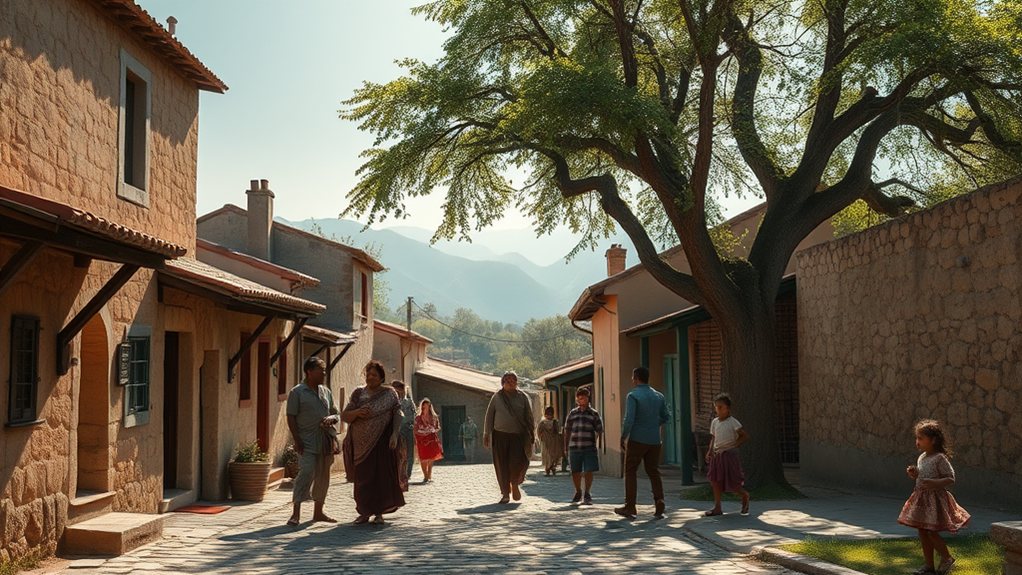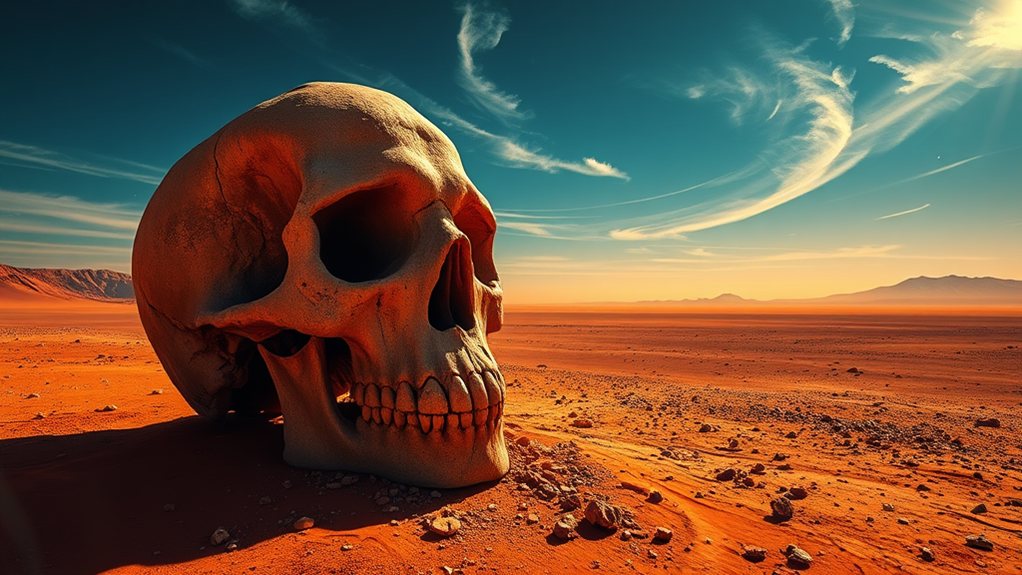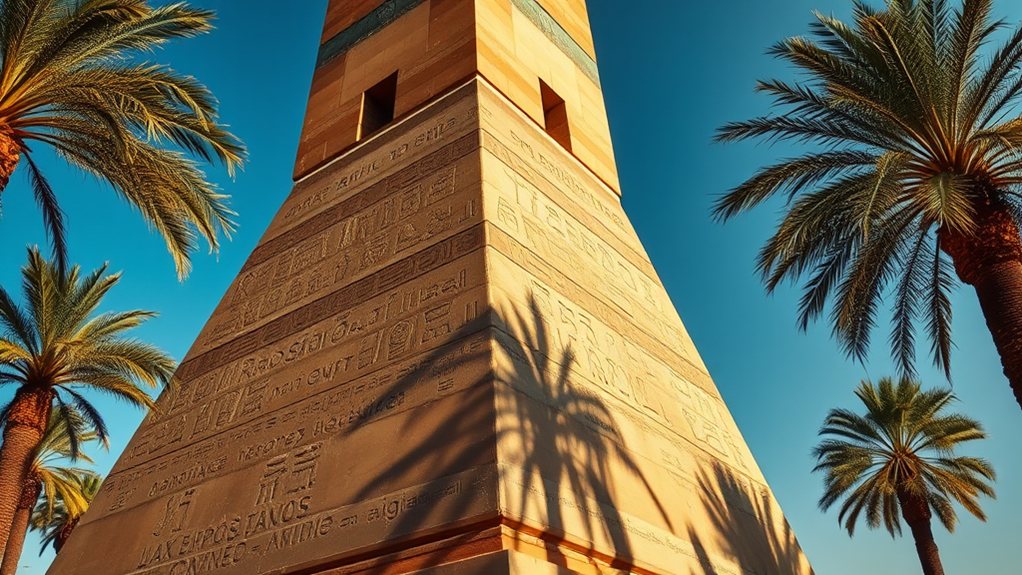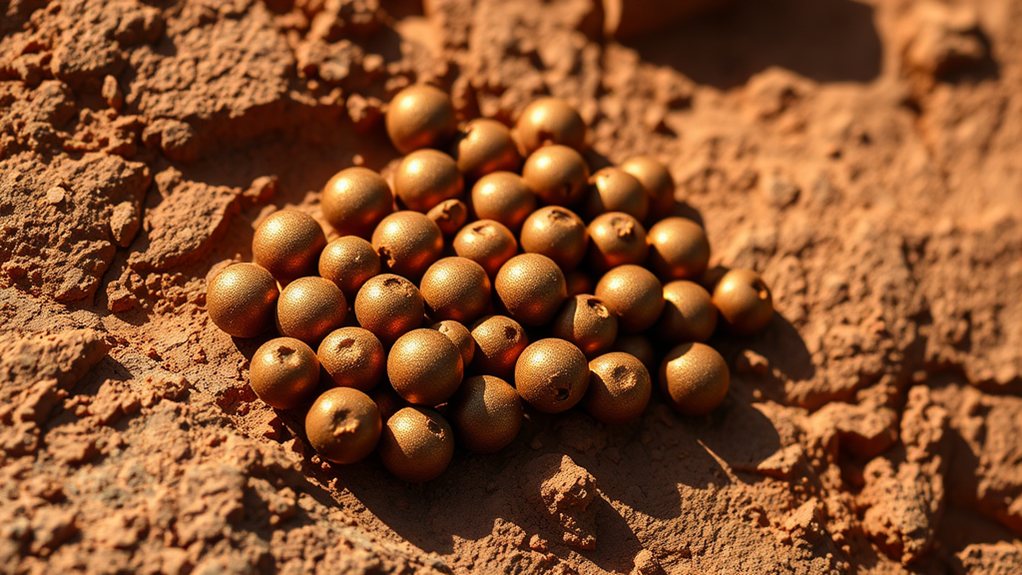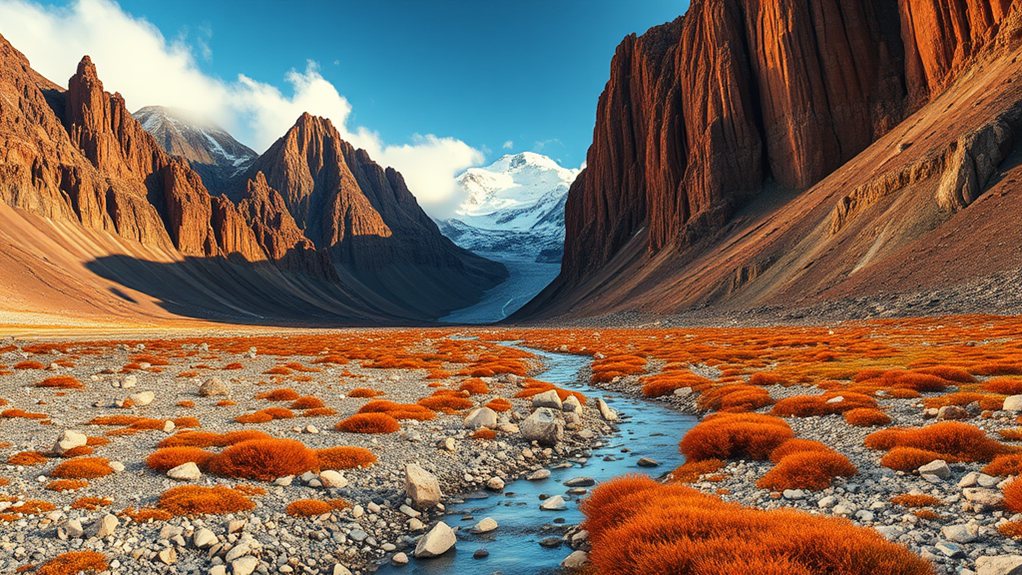
While Antarctica’s icy surface has long captivated scientists and explorers, a groundbreaking new map from the British Antarctic Survey reveals what lies beneath its frozen exterior. After analyzing six decades of research data, scientists have created a detailed visualization of Antarctica’s terrain as it would appear without its ice cover, showing a diverse landscape of mountains, valleys, and ancient river basins.
You’ll find that this hidden world tells an incredible story of Earth’s past. The continent wasn’t always the frozen wilderness we recognize today. Millions of years ago, Antarctica was home to lush forests, swamps, and diverse wildlife, including dinosaurs. The newly revealed landscape features provide evidence of this prehistoric environment, with river systems and plains that once supported abundant life.
Before Antarctica became Earth’s frozen continent, it flourished with dense forests, diverse wildlife and prehistoric creatures roaming its verdant landscapes.
The map’s significance extends beyond historical interest. It’s helping scientists understand how climate change might affect the continent’s ice sheets. By understanding what lies beneath the ice, researchers can better predict how these massive frozen structures might respond to warming temperatures. This knowledge is essential for forecasting potential sea-level rises that could impact coastal communities worldwide.
Scientists have discovered that Antarctica’s terrain is more complex than previously thought. The map shows deep basins that could accelerate ice movement and high mountain ranges that might slow it down. These features play a fundamental role in how ice flows across the continent and eventually into the ocean.
This mapping achievement represents a milestone in Antarctic research. It combines data from various sources, including radar surveys that penetrate the ice to reveal the rock beneath. The British Antarctic Survey’s work has opened new possibilities for scientific discovery, potentially leading to findings about ancient life forms preserved beneath the ice.
The project continues to generate excitement in the scientific community and beyond. As research tools advance, we’re likely to learn even more about this mysterious continent that holds countless secrets about Earth’s past and could hold important clues about our planet’s future.
